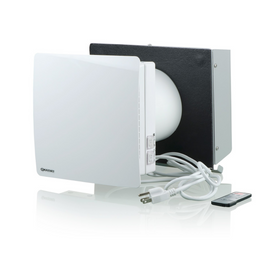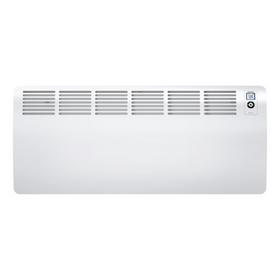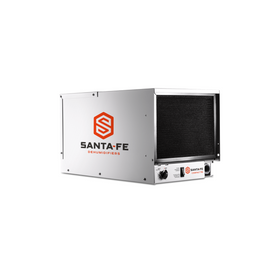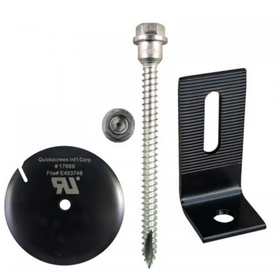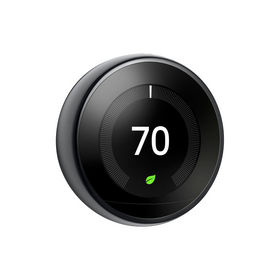
How Can Apartment Buildings be Sustainable?
Last Updated: Apr 13, 2025Rise writes about sustainable home improvement for homeowners—but what about sustainable apartment complexes for renters? Renters may have less control over the sustainability of their residence, but they do have control over their initial choice of what type of building they live in. There is a growing trend among multi-unit developers, architects, and property managers to incorporate sustainable design strategies into multifamily residential buildings. Why? Two main reasons.
First, with climate change, weather volatility, and fluctuating energy costs, the need to reduce humanity's carbon footprint is no longer up for discussion. It's a necessity. Buildings, as Rise readers are well aware, are a significant consumer of energy. According to the United Nations Environment Programme, buildings account for almost half of the world's energy expenditures, 40% of greenhouse gas emissions, 25% of the earth's drinkable water, and, in developed countries, more than 20% of all solid waste produced.
Research by the U.S. Energy Information Administration shows that households in the United States need to power numerous home devices and equipment. In 2015, 51% of a household's annual energy consumption was for just space heating and air conditioning. These mostly seasonal and energy-intensive uses vary significantly by geographic location, home size, and structure, and equipment and fuels used.
Water heating, lighting, and refrigeration are year-round home energy uses, the EIA continues. In 2015, these accounted for 27% of a households total energy use. The remaining share—21%—of home energy use was for devices such as televisions, cooking appliances, clothes washers, and clothes dryers, as well as a growing list of consumer electronics including computers, tablets, smartphones, video game consoles, and internet streaming devices."
Second, homeowners and renters are becoming more eco-savvy: they're aware of the necessity of green design in construction. They're also seeking out sustainability features for their housing. A Resident Preferences survey conducted by the National Multifamily Housing Council found that respondents were willing to pay $32.64 more per month to rent an apartment with a green building certification.
A total of 75% of those surveyed said they were "interested" or "very interested" in green certifications, including the U.S. Green Building Council's Leadership in Energy and Environmental Design (LEED). Also, 43% of respondents mentioned that apartment community websites should say how sustainable features have used the development and design of the property. It appears developers and architects have been listening.
A Boom in Sustainable Building
According to Alexandra Ciuntu, in an article for Rentcafe.com's blog, the construction of sustainable apartment buildings peaked in 2016. "Overall apartment construction rose by 34% in the past decade," she writes. "While the 42,900 new LEED-certified units introduced in 2018 represent a -6% y-o-y [year-over-year] drop in sustainable construction, they also bring a 283% increase compared to 2008. The highest y-o-y increase in the number of sustainable rentals took place in 2014, a 19% leap. However, the year green construction truly blossomed was 2016, when 50,300 LEED-certified units accounted for 16% of the residential construction conducted that year—a sharp 10.5% y-o-y growth in large-scale developments across the country."
"In 2008," Ciuntu continues, "only 5% of multifamily units were LEED-certified and, up until 2014, there was a continuous upward streak of green construction that culminated with 19% of the new apartments completed that year getting certified. Since then, the percentage of sustainable housing units has dropped, hitting 14%in 2017 and slowly recovering in 2018 at 15%."
According to Yardi Matrix data, she also writes, Chicago, IL has the most LEED-certified apartments on the U.S. market with 20,600 units. Smaller cities like McLean, VA (47%), Evanston, IL (30%), and Cambridge, MA (29%) boast the largest share of sustainable apartments.
The Basics of Sustainable Design
Whether LEED-certified or not, many apartments and condo buildings now boast the basics in sustainable design, to impress more sustainably-minded residents and reduce energy use. Daylighting is one approach, which is accomplished by increasing the size and number of windows in a unit—particularly when placed to maximize winter sun and minimize summer heat. Not only does natural light contribute to the residents' well-being, but it also cuts down on the need for artificial illumination and thus lowers energy costs.
Adding energy-efficient lightbulbs, such as LEDs, reduces electricity costs. Similarly, low-flow showerheads, toilets, and water faucets control and minimize water use. Another easy way multifamily residences incorporate "green" features in units is by installing energy-efficient appliances—including washers, dryers, dishwashers, refrigerators, stoves, and ovens—to reduce water and electricity use.
In the design of multifamily residences, architects and builders may also incorporate recycled or reused materials such as wood or brick. Low VOC paints and carpets reduced pollutants and elevate indoor air quality. Roofs constructed with materials that have a high solar reflectivity index can help reduce air temperatures inside the building and thus the need for air conditioning.
Going Above and Beyond
These three multifamily residences go above and beyond the basics with sustainability initiatives that have set the bar high for the responsible design and construction of apartments and condo buildings.
The Rose, Minneapolis, MN
In addition to meeting criteria that would make half of the 90 units qualify as affordable housing, the nonprofits Aeon and Hope Community pushed the limits of sustainable construction practices. The developers intended the structure to serve as a blueprint for budget-conscious, environmentally healthy building throughout the affordable-housing sector. They also met standards of the Living Building Challenge, a broad-based approach that goes well beyond established LEED sustainability measures.
Table of Contents

The 145,000-square-foot complex on a former brownfield site adjacent to freeways, completed in 2015, is 75% more energy-efficient than the 2007 American Society of Heating, Refrigerating, and Air-Conditioning Engineers (ASHRAE) standards. A carefully designed courtyard allows light to enter units even in winter months. Solar thermal panels on the south side of the building provide 35% of the building's hot water needs. The building collects stormwater used for irrigating the 5,000-square-foot community garden. A five-stage dedicated outdoor air system improves indoor air quality. Water-saving fixtures and Energy Star-rated appliances that reduce potable water use by 47 percent. The two rooftops are set up for the future installation of large photovoltaic arrays.
The Commons, Melbourne, Aus.
The five-story apartment building of 24 two-bedroom units is next to a train line and bike path—and doesn't have a parking lot. A 13.8-inch-thick, acoustically insulated wall on the western side shields the building from train noise; the building's outer skin is opaque corrugated fiberglass with a corrosive-resistant gel coating. Built into the wall is a 2.95-inch ventilated cavity, drawing air through perforated copper panels to flush hot air out of the top. On the north balcony side of the building, dangling chains host climbing wisteria vines that sprout healthy green leaves to shade the apartments in the summer.

None of the apartments has air conditioning, instead of relying on the building's thermal efficiency and ceiling fans to keep cool in the summer. Heating is provided by hydronic gas boilers. Each apartment is fitted with a "kill switch" at its front door, enabling residents to cut power to all outlets and appliances (bar the refrigerator) when leaving home. Recycled bricks were used in the lobby walls. Unfinished timber floorboards were top-nailed, so no glue was used.
Bold L&H Lofts, Chicago, IL
This 1926 historic structure was rehabbed into "Chicago's first landmark, eco-living, rental loft building." The LEED-certified building includes units with TRACO Manufacturing and Soft-Lite Windows and individual high-efficiency water heaters. Sustainable features also include elevators that operate on 70% less energy than traditional lifts. High-efficiency HVAC systems with heat exchangers; formaldehyde-free kitchen cabinets; low-VOC paint and carpet; and low-volume plumbing fixtures.

The 8,300-square-foot green roof has areas of indigenous plantings that provide energy savings to the residents by reducing the demands on the heating and air conditioning systems in each unit. The green roof also limited rainwater runoff. Other areas of the roof have planters for tenant vegetable or flower gardens, along with spaces for a dog run and a deck for entertaining.
These are just a few examples of more sustainable apartment buildings being developed all over the continent. For apartment dwellers who are looking for more sustainable residences and want to do more than recycle: do a little research, and try to find the development that matches your values. If it doesn't yet exist in your city, perhaps it coming soon to a neighborhood near you!
Camille LeFevre
Camille LeFevre is an architecture and design writer based in the Twin Cities.

